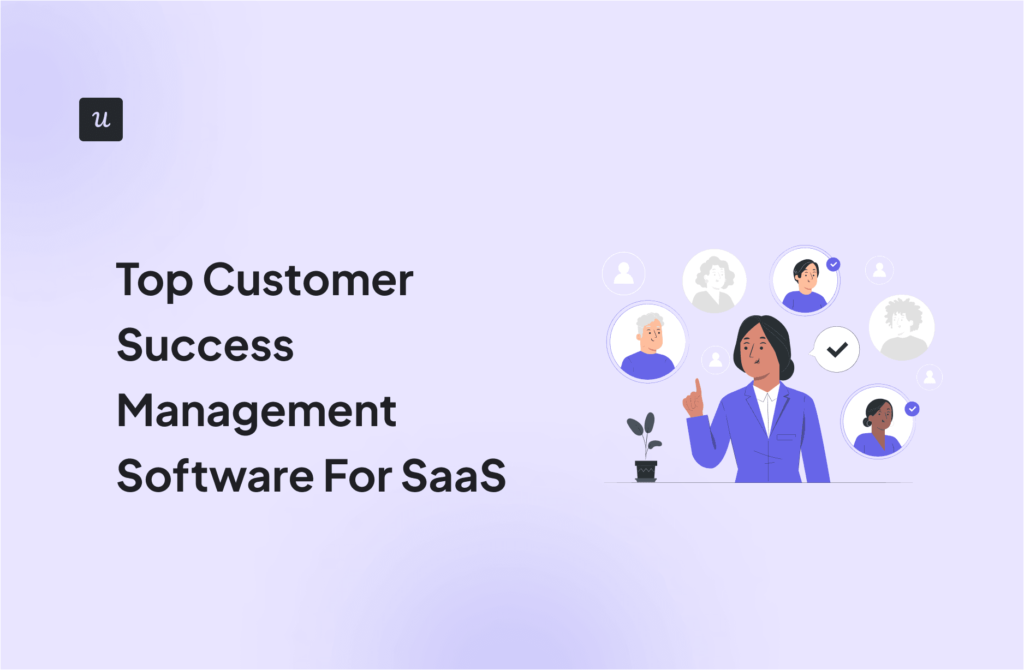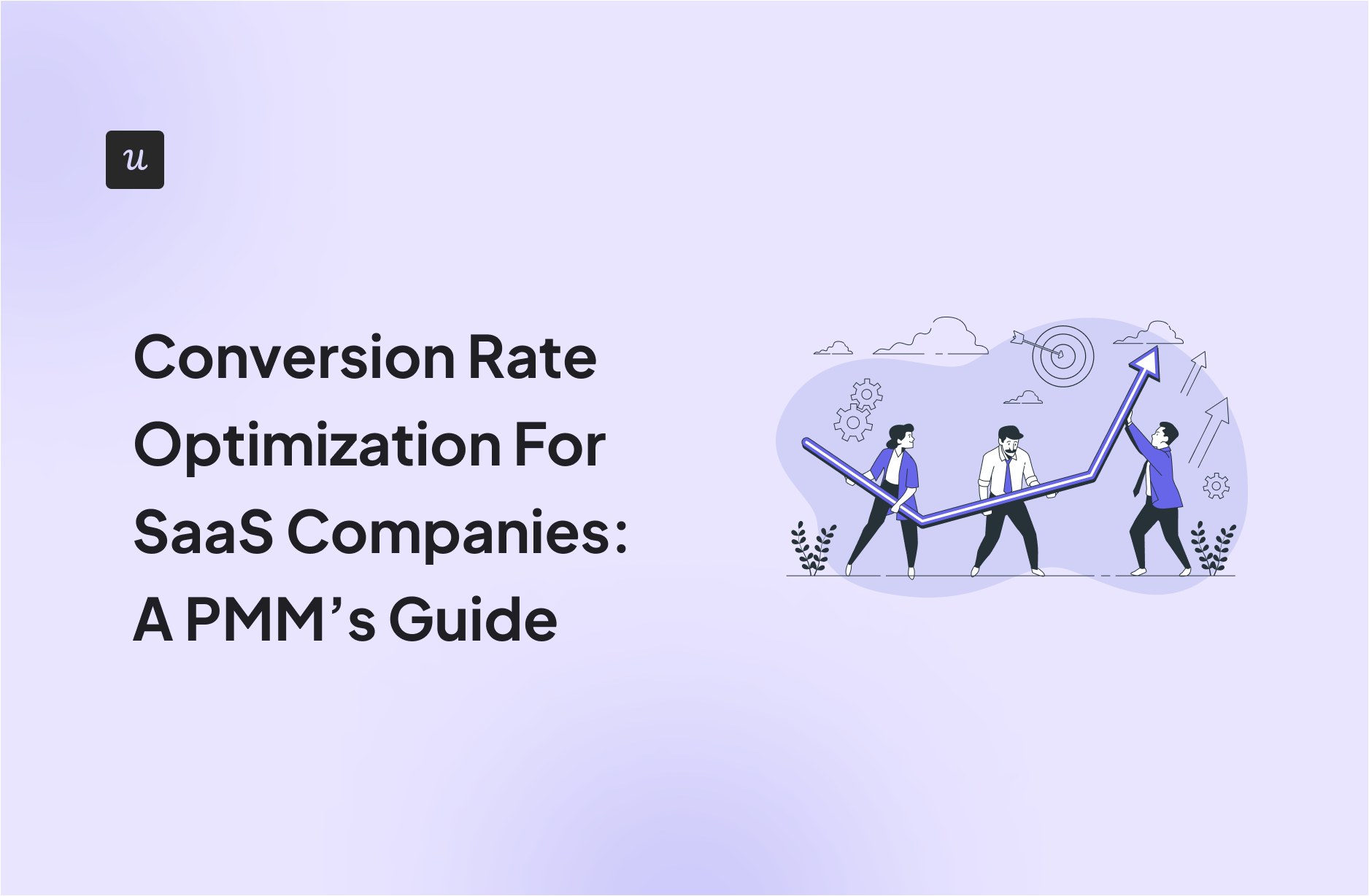
Conversion rate optimization for SaaS companies is an important task as it directly affects the company’s growth.
If you’re looking to improve conversions, this blog is for you. We cover the basics, explore conversion rate benchmarks, and share some helpful tactics.
What’s your biggest challenge in conversion rate optimization right now?
How do you currently identify where users drop off in their journey?
To improve conversions, how are you personalizing the user’s first-time experience?
Ready to fix your conversion funnel without writing code?
Userpilot helps you understand user behavior, build personalized onboarding, and run A/B tests to improve your conversion rate optimization.
Try Userpilot Now
See Why 1,000+ Teams Choose Userpilot

Summary of conversion rate optimization for SaaS
- A SaaS conversion rate refers to the percentage of visitors who take a desired action on the website or in-app. For SaaS, the desired action is when a trial user goes to become a paid customer.
- SaaS conversion rate optimization is important to create the best customer experience that helps lower customer acquisition costs and increase MRR.
- Four SaaS conversion rates are significant to focus on. They are website visitors to a free trial, a free trial to Product-Qualified Lead (PQL), PQL to paying users, and growth metrics conversion.
- Use benchmarks to monitor your performance to see how well each stage converts.
- Analyze trends in behavior analysis to understand what brings value to users so you attract the right customer fit.
- Use your signup flow to collect data from new users to understand users’ jobs to be done.
- Personalize the first-time user experience to reduce the time to value.
- Use checklists and other UI patterns to guide users to engage with relevant features that drive them to the activation point.
- You can use funnel analysis to fix any friction points within your product.
- Monitor retention during the trial period so you can make changes to drive more user engagement.
- Use A/B testing to determine what improvements to make to enhance the overall trial experience.
- When launching premium features, use trials so users can understand the value they can get from them.
- If you want a no-code experience in collecting user data, launching A/B tests, and getting detailed product analysis, book a demo and see how Userpilot can help.
What is the SaaS conversion rate?
SaaS conversion rate is the count of successful conversions (free trial users to paid users) over total visitors.
For SaaS companies, this isn’t just about website sign-ups but also in-app conversions – leading to paying users. This is different from e-commerce companies, where a conversion might be a purchase.
Why is conversion rate optimization (CRO) important for a SaaS company?
For Product-Led Growth (PLG) companies, it’s less about flaunting features and more about aligning with customer needs, diverging from the e-commerce norm.
The journey in SaaS encompasses numerous ‘micro-conversions’—pivotal actions a user undertakes from signup to final payment. Steering these steps effectively is where SaaS conversion optimization, commonly referred to as CRO, becomes vital.
By enhancing the customer experience, CRO ensures a seamless user journey and brings financial benefits such as lowering acquisition costs and enhancing Monthly Recurring Revenue (MRR).
Important SaaS conversion rates to focus on as a PMM
As a Product Marketing Manager (PMM), understanding conversion metrics isn’t limited to just those initial website visitor conversions.
Conversion rate optimization in this domain spans the entire customer journey, from the moment they first interact with your platform to the retention and potential upselling stages – where they become advocates and share positive customer testimonials.
With this broader perspective in mind, let’s delve into the specific conversion rates that, as a PMM, you should be giving utmost attention to.
Website visitors to free trial conversion rate
This conversion rate shows the fraction of website visitors who initiate a free trial. For some SaaS models, this includes those choosing a ‘freemium‘ version.
The shift from a site visitor to a trial user signifies a user’s interest and their initial commitment to exploring your software.
It’s a vital step for SaaS firms, particularly with a freemium approach. This phase lays the foundation for further engagement, possible upsells, and ultimately transitioning these users to paying customers.
The main metrics to focus on are:
- Free Trial Conversion Rate: Calculates the percentage of website visitors who sign up for a free trial.
- Number of Free Trials: A count of how many visitors have tried out your product.
Free trial to Product-Qualified Lead (PQL) conversion
A Product-Qualified Lead (PQL) is a user who’s experienced the value of your software during their trial, reaching the activation point.
Unlike traditional leads, gauged by marketing and interest, a PQL is measured by their product engagement.
The journey to becoming a PQL involves not just signing up but diving into the software’s features and realizing its value.
By enhancing initial engagement and streamlining signup, users are more likely to stay engaged and grasp the product’s essential benefits.
The main metric to focus on is:
- MQL to PQL Conversion Rate: Measures the percentage of Marketing-Qualified Leads (MQLs) that evolve into Product-Qualified Leads.
PQL to paying customer conversion rate
The PQL to paying user conversion rate measures the transition of users who’ve reached the product’s value threshold to those who’ve taken the next step by becoming paying users.
Whether they began as free trial or freemium users, this average conversion rate indicates their shift from mere engagement to financial commitment.
Achieving the status of a Product-Qualified Lead (PQL) for online business is a significant milestone, indicating a user’s realization of the product’s value. But, the ultimate goal for any SaaS business is to translate this perceived value into actual revenue.
The PQL to paying user conversion rate represents the strategies’ effectiveness in showcasing value and persuading users of its worthiness for their investment.
The main metrics to focus on are:
- MRR (Monthly Recurring Revenue): Calculates the monthly predictable revenue the company can expect from its subscribers.
- Trial to Paid Conversion Rate: Measures the percentage of trial users (who are essentially potential PQLs) that transition into paying customers.
Growth metrics conversion
Growth metrics conversion encompasses strategies that encourage existing customers to deepen their product engagement. This can involve upgrades, upselling to enhanced features, or cross-selling related offerings.
It’s not just about gaining new customers but maximizing value from current ones. Emphasizing growth metrics not only boosts revenue but also improves customer satisfaction and retention by offering users more from the product suite.
The main metrics to focus on are:
- Upsell Rate: The percentage of existing customers who opt for a more advanced or expensive version of your product.
- Cross-Sell Rate: Measures the success in selling complementary products or services to your existing customers.
- Expansion Revenue: Quantifies the additional revenue from existing customers through upselling, cross-selling, and other growth initiatives.
SaaS conversion rate benchmarks
Having benchmarks gives you a point of reference to gauge your performance relative to industry standards. Here are some key conversion rate benchmarks that can guide you in evaluating their strategies and identifying areas for improvement.
- Website Visitors to Free Trial Conversion Rate: One of the primary metrics SaaS companies track is how many website visitors start a free trial. The industry benchmark for this metric sits at 8.5%.
- Free Trial to Product-Qualified Lead (PQL) Conversion: Once users start a trial, the next step is guiding them to a stage where they see enough value to be considered a PQL. The average benchmark for this conversion is 4%.
- PQL to Paying Customer Conversion Rate: The ultimate goal for SaaS companies is converting those PQLs into paying customers. The industry benchmark for this critical transition varies from 20% to 40%.
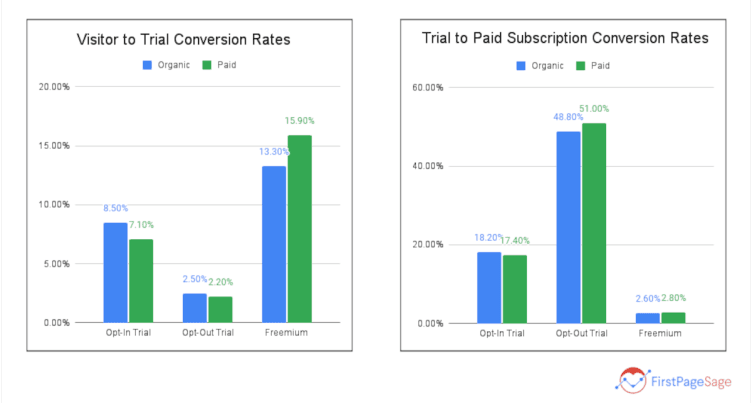
8 SaaS conversion rate optimization tactics
Implementing strategic conversion rate optimization tactics is indispensable to capture, retain, and grow your user base.
You can deploy eight conversion rate optimization tactics to boost SaaS conversions and maximize revenue.
1. Improve messaging to achieve the right customer fit
It’s imperative not just to attract more users, though, but to captivate the right ones. This requires more than just generic advertising; it necessitates a deep understanding of what your power users value and resonate with.
By analyzing the trends and behaviors of these users, you gain insights into what truly drives them to your product.
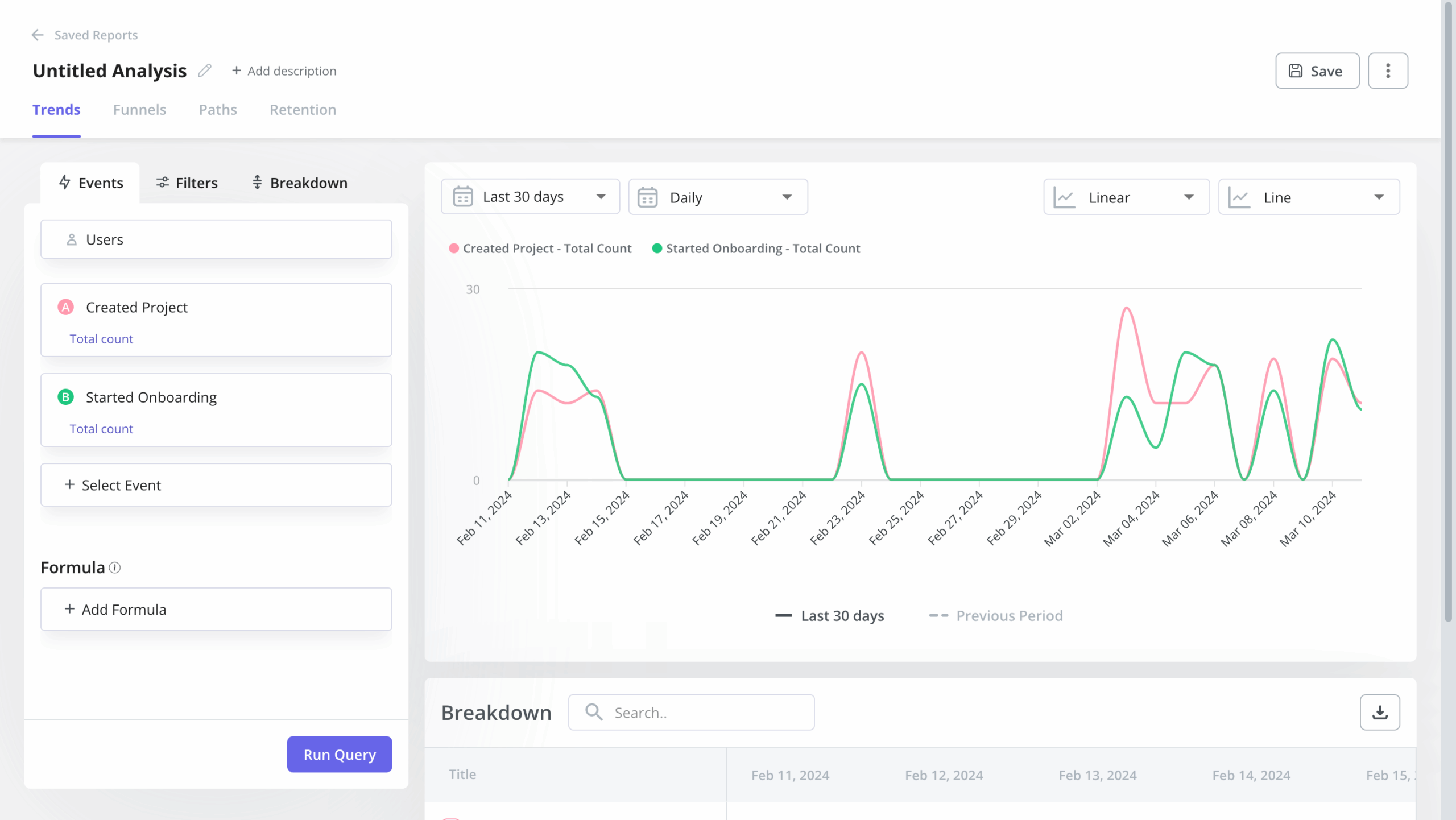
To gain a comprehensive view, pair behavioral data with user surveys. This combination provides deeper insight into your ideal persona’s language and expectations, enabling refined website messaging and value proposition.
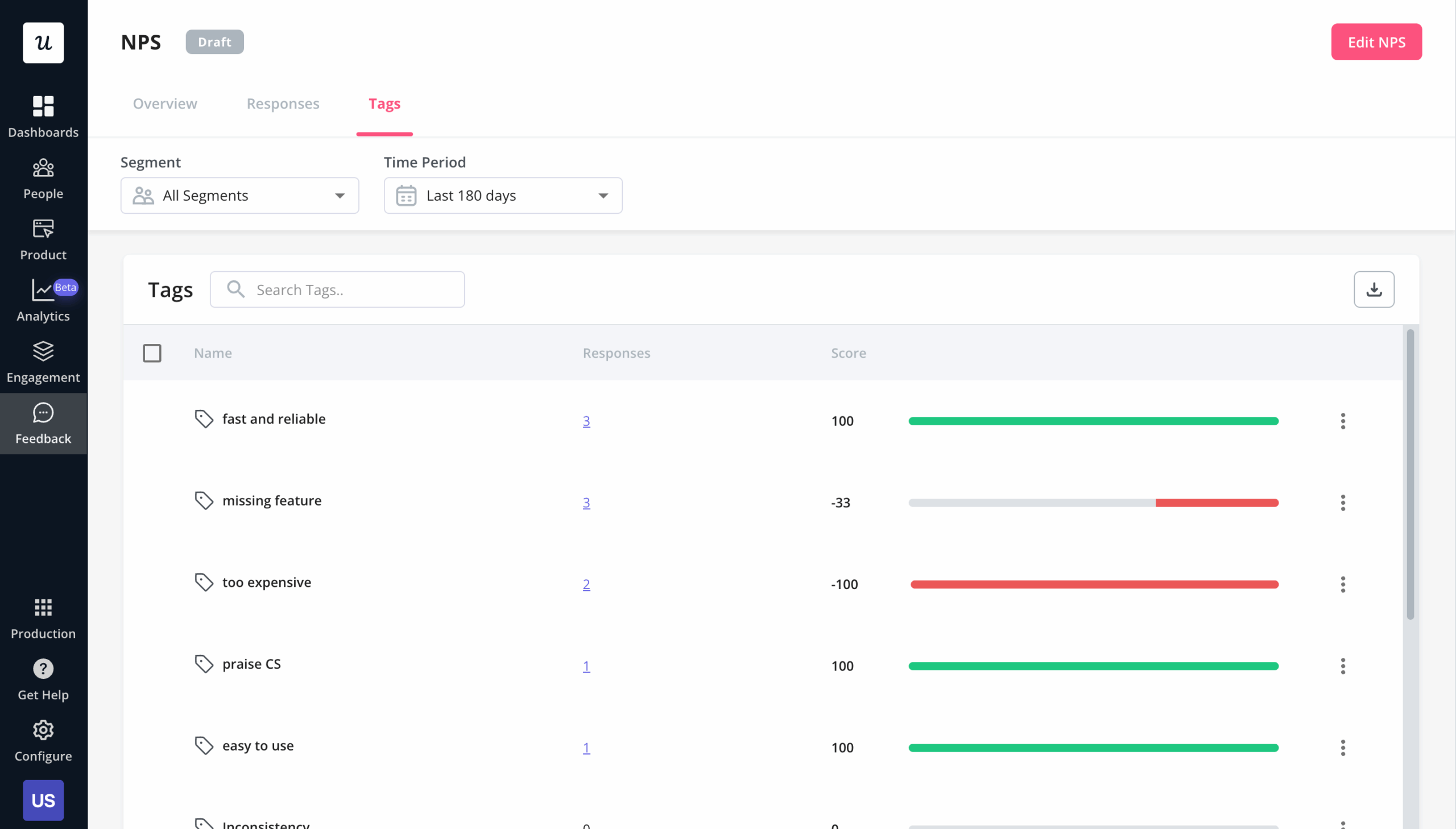
Shaping your content and pricing strategy attracts not just more visitors but also the most qualified leads. If you’re looking to refine your microcopy, try Userpilot’s AI writing assistant. It not only creates copy from scratch (through a given prompt) but also refines existing copy.
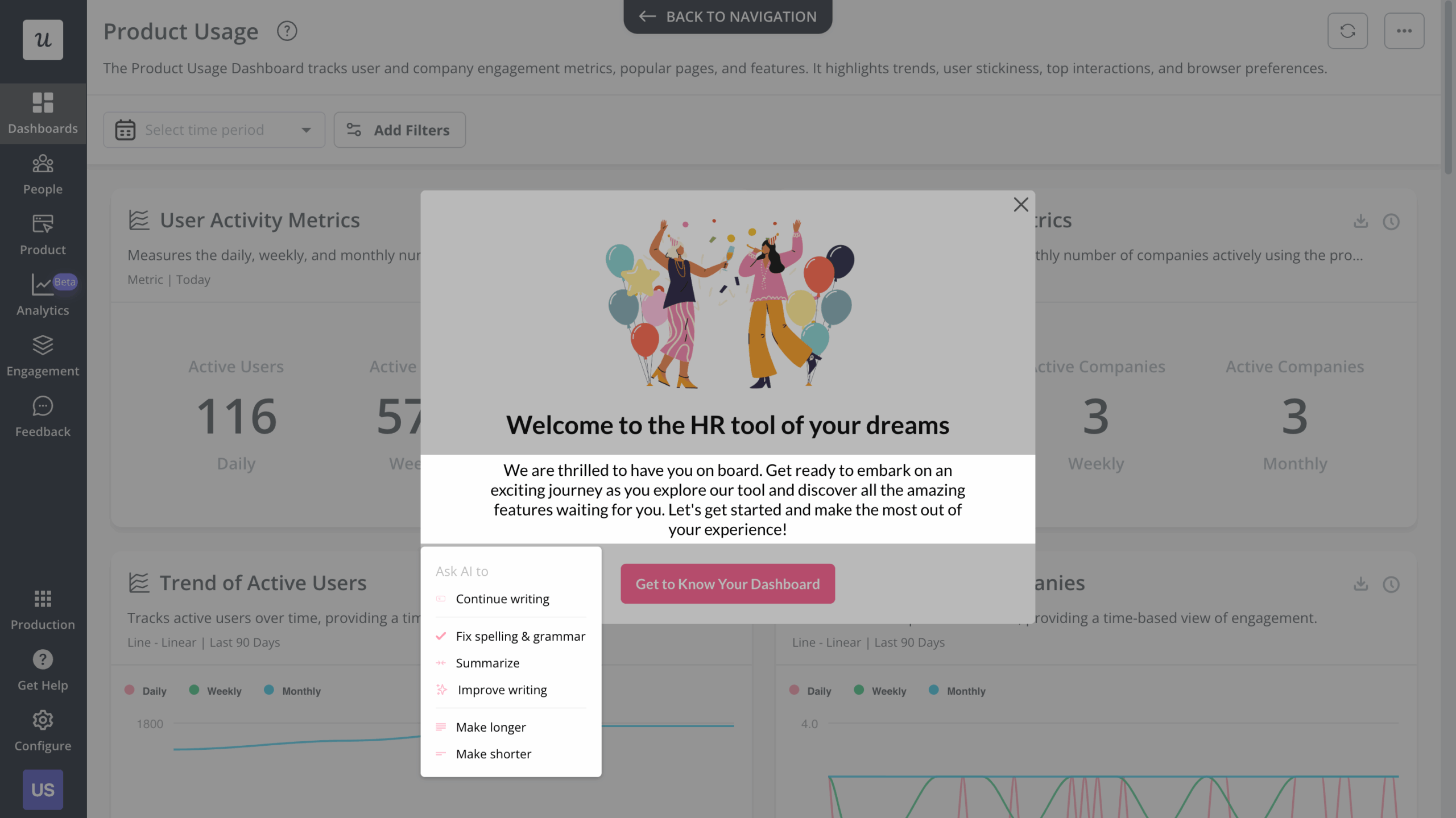
2. Collect information during the signup flow
The signup process is a gateway for users to access your product and a golden opportunity to gather key insights about them.
Understanding their “Jobs To Be Done” (JTBD) and primary purpose for using your software allows for a more tailored and engaging user experience.
For instance, take Notion—a productivity platform. Recognizing the diverse needs of their audience, Notion prompts new signups to identify their primary use case. Notion can then personalize the onboarding experience to highlight relevant features and benefits.
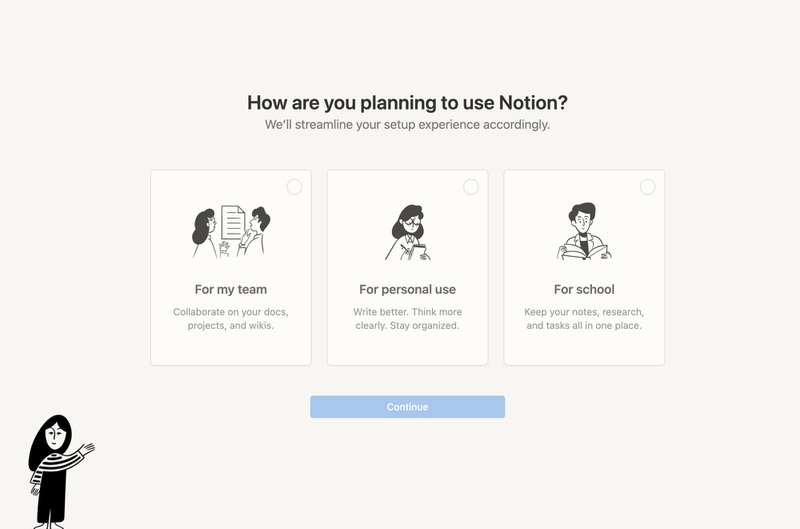
3. Personalize the first-time user experience
A user’s first interaction with your platform often dictates their overall relationship with your product. Personalizing this experience can encourage users and ensure they quickly recognize your software’s value.
For instance, Notion guides teams to begin with projects and tasks, using the platform’s empty state to prompt action and showcase potential results.
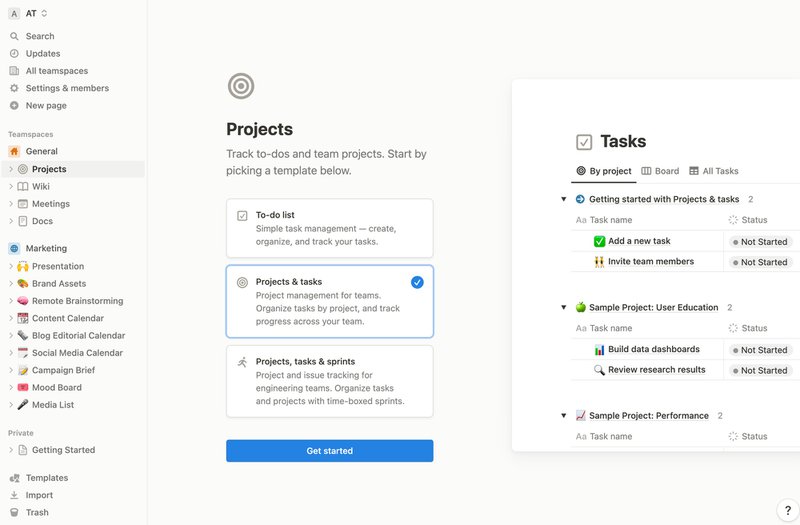
On the other hand, individual users are presented with a checklist. This encourages them to explore and use the platform’s diverse templates.
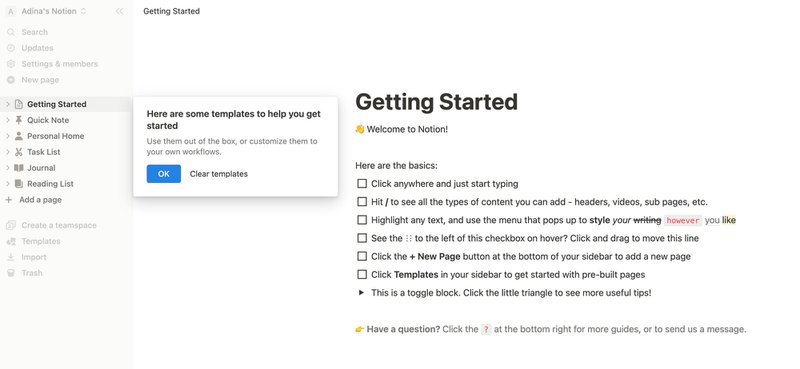
4. Focus on the in-app onboarding experience
Once users access your SaaS application, guiding them becomes pivotal. The in-app onboarding introduces them to your software’s value.
In-app messaging, like checklists, serves as a roadmap, highlighting vital features and guiding users to activation points.
A checklist offers a structured path, underscoring essential tasks. As users progress, they uncover functionalities and feel a sense of accomplishment, spurring further exploration.
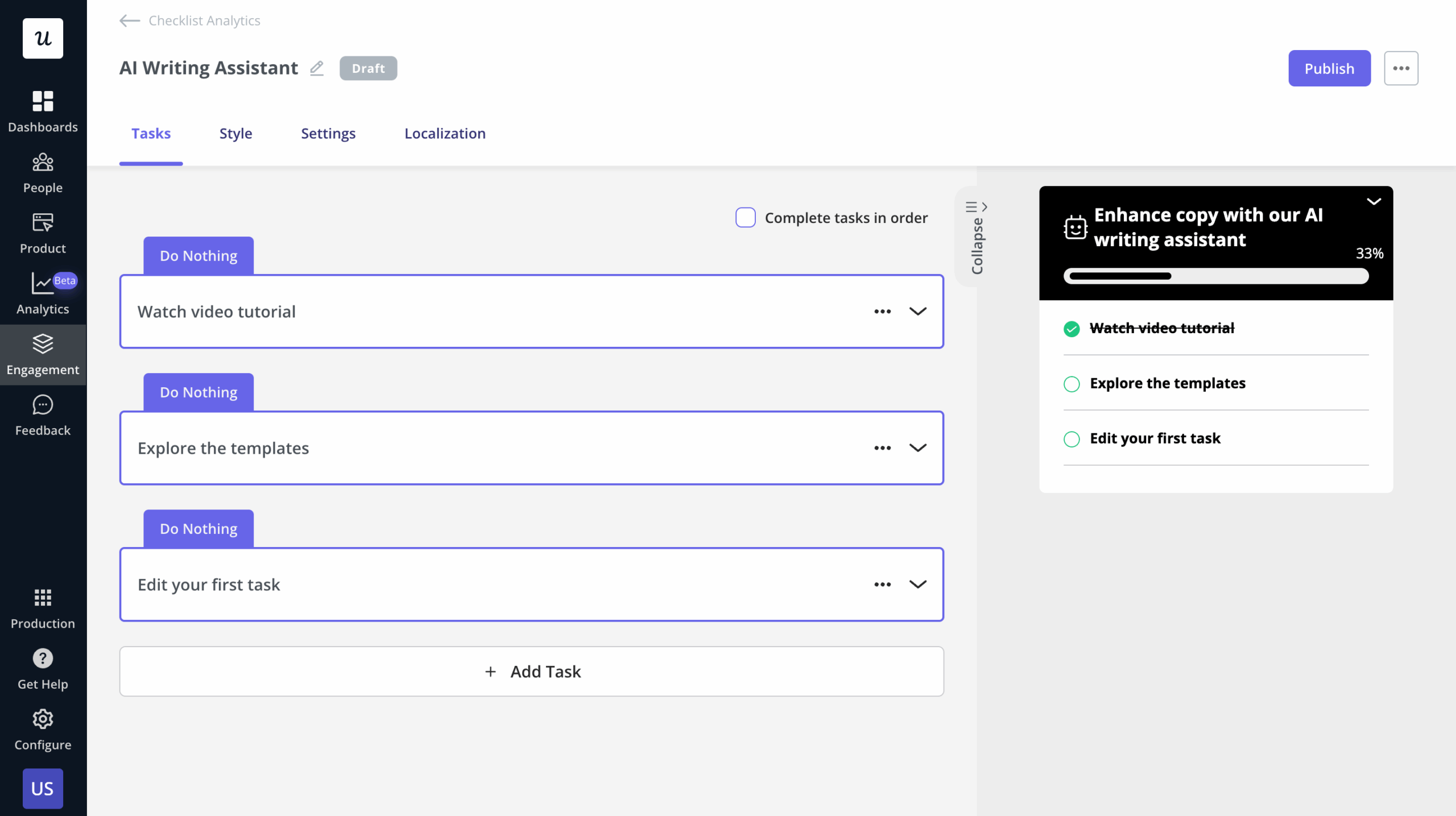
5. Use funnel analysis to identify drop-off points
User journeys are often visualized as funnels, moving users from interest to engagement. However, obstacles, especially on critical pages like the pricing page, can hinder smooth progression. Recognizing drop-off points is vital for conversion rate optimization.
Funnel analysis helps identify these junctures of disengagement, revealing friction points. Once spotted, you can apply tailored solutions.
Some users might need in-app guidance to clarify features or understand pricing page value. For deeper issues, delving into UX and UI enhancements might be key.
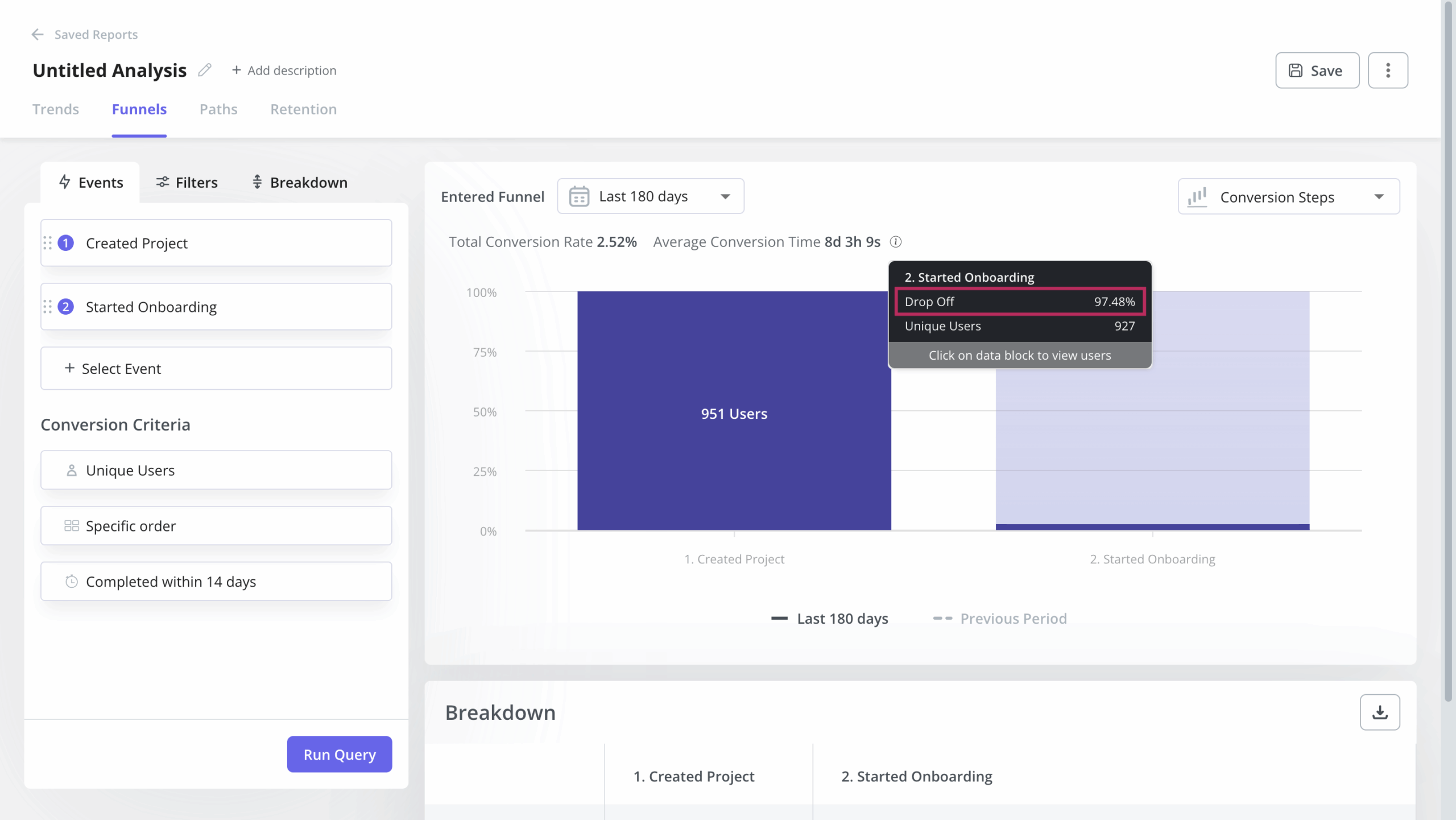
6. Monitor retention during the trial period
Cohort analysis reveals when users often disengage. This insight allows you to enhance your onboarding and email marketing for better engagement.
Trials might last 14 days or more, but early engagement, especially on the second day, is pivotal. If users don’t engage early, the odds of transitioning them to paid subscriptions drop notably.
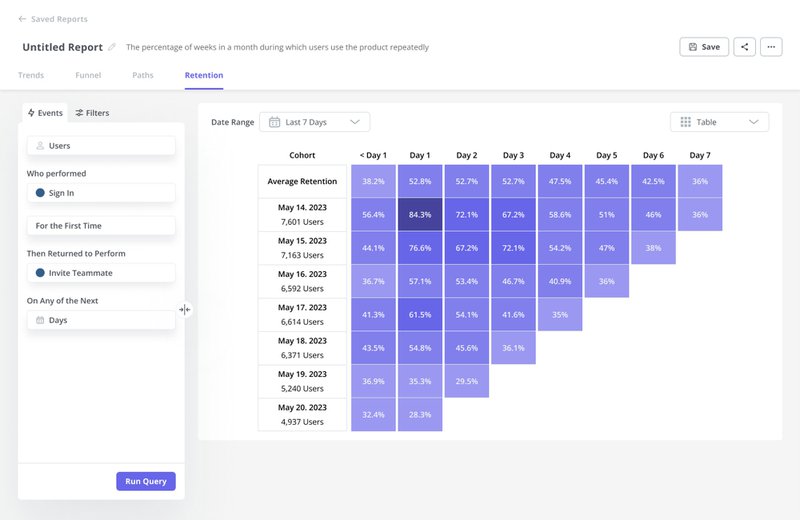
7. A/B test different in-app experiences
One of the most effective ways to produce an optimal user experience for SaaS companies is to pinpoint what works best through A/B testing.
By A/B testing different in-app journeys, you can directly compare and contrast various user pathways. This allows you to discern which flows lead users to the activation point more swiftly and which might be causing unnecessary friction or confusion.
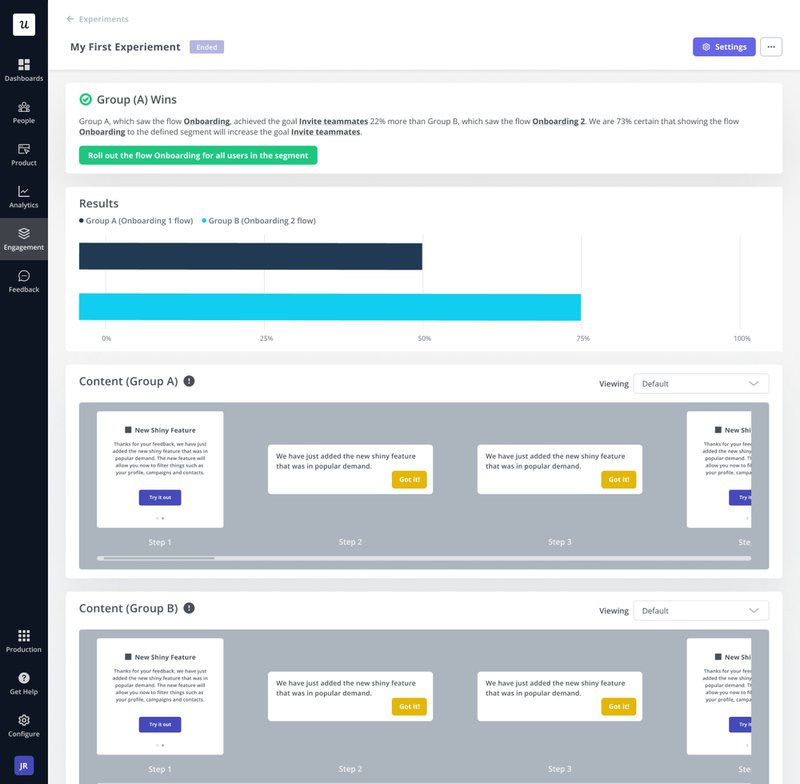
8. Use trials to help users discover premium features
Trials are gateways for users to experience your product’s basics and powerful tools to showcase the allure of premium features. By strategically using trials, you can entice users to see the added value premium features bring, nudging them closer to upgrading to premium users.
Consider the tactic of reverse trials, especially when launching a new premium feature. Instead of locking users out, grant them temporary access to experience the new feature firsthand.
Loom, for instance, adopted this approach when they launched their AI functionality. Loom provides users with a trial run of this advanced feature.
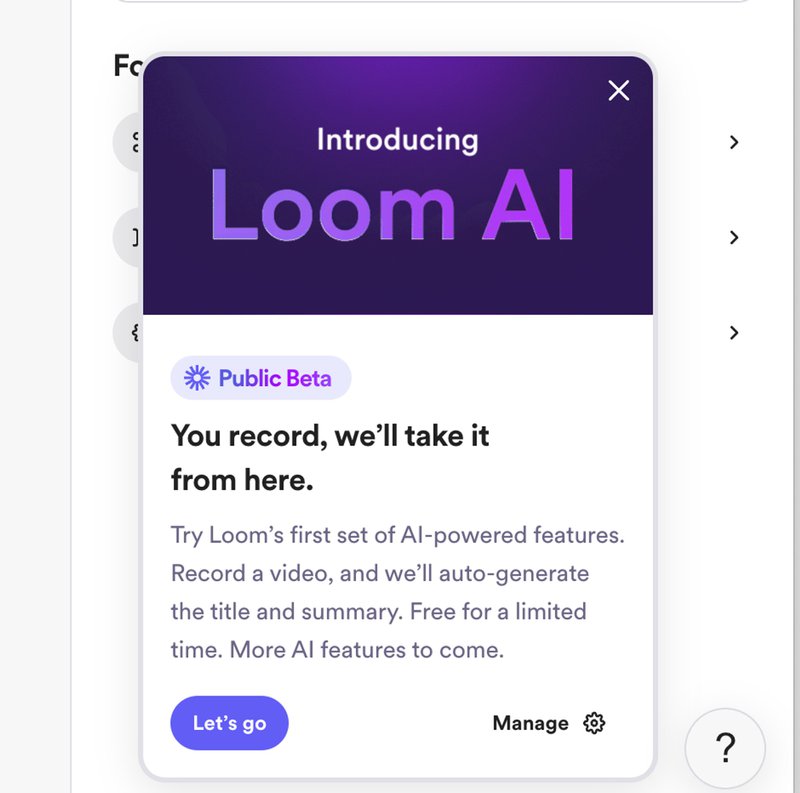
And by the end of the trial, they were prompted with an opportunity to upgrade.
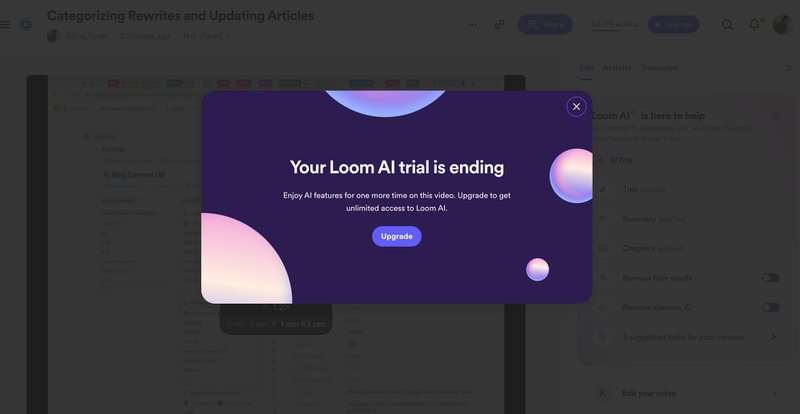
Conclusion
Conversion rate optimization for SaaS is critical to focus on within your product to ensure your product continues to grow and be successful. It may feel daunting and overwhelming, but you should focus on the most important metrics to begin.
Want to get started with conversion rate optimization for SaaS? Get a Userpilot Demo and see how you can gather the right information to capture these metrics, monitor progress, and efficiently implement improvements.






